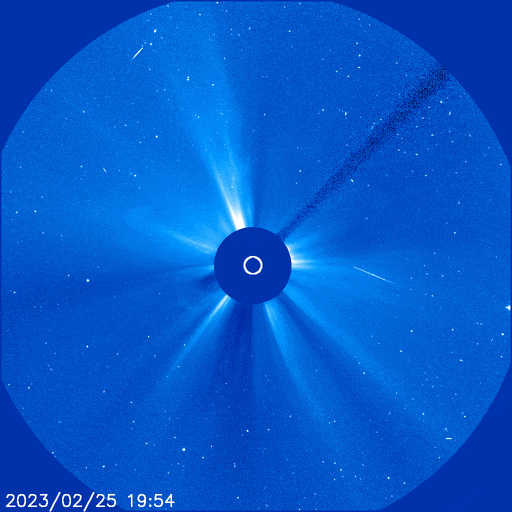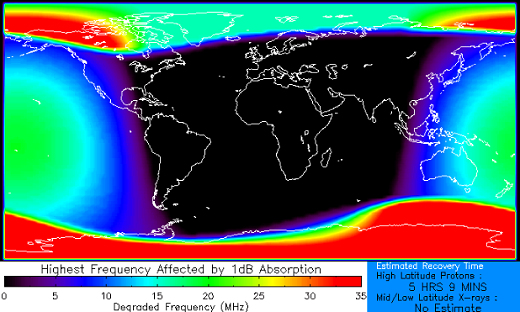GEOMAGNETIC STORM WATCH (G2-CLASS): The odds of a geomagnetic storm this week are increasing. There are now two CMEs (#1, #2) en route to Earth, both launched over the weekend from the vicinity of sunspot AR3229. Their consecutive arrivals on Feb. 27th and 28th could spark G2-class (Moderate) geomagnetic storms. During such storms, auroras can appear in the USA as far south as, e.g., Idaho and New York. Aurora alerts: SMS Text.
ANOTHER “CHAIN REACTION” EXPLOSION ON THE SUN: On Friday, Feb. 24th, a chain reaction of events on the sun sparked a solar flare, two radio blackouts, and an Earth-directed CME. On Saturday, Feb. 25th, it happened again. A magnetic filament connected to sunspot AR3229 erupted, producing an M6-class solar flare and a shortwave radio blackout over the Pacific Ocean. Soon after, a lopsided halo CME emerged:
The flank of this CME should strike Earth’s magnetic field on Feb 28th, possibly sparking G1– to G2-class geomagnetic storms. NOAA analysts are analyzing the CME’s trajectory now, and their results could refine the forecast.
Shock waves in the CME accelerated solar protons to nearly light speed, and the particles have already reached Earth. Right now, NOAA’s GOES-16 satellite is detecting a surge of protons with energies greater than 10 MeV. Our planet’s magnetic field is funneling these particles toward the poles where a second type of radio blackout is underway–a polar cap absorption (PCA) event:
Airplanes flying over these regions may find that their shortwave radios won’t work due to the ionizing effect of infalling protons. This PCA could persist for days. You can monitor its progress here.


